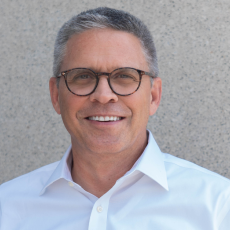What is RES’ footprint in terms of renewable energy development across North America?
RES Americas has been present in the U.S. and in Canada for 22 years, developing, building and doing asset management and operation & maintenance for projects in wind, solar and energy storage. Since we are a privately owned company, we play where we can add value so at the end of the development, we sell to a strategic or private equity fund, we can build the facility and then operate it. In the coming years, we are focused on growing our development pipeline by more than threefold.
To what extent do you believe the Inflation Reduction Act will affect your operations?
The IRA is a great step forward, but we still do not have a national transmission and distribution strategy in the U.S. or in Canada. The tax guidance, which will come out next year, will give us some additional information around the apprenticeship programs and prevailing wage - which are going to impact the cost in the location of development.

Everything looks promising at the moment but without a national T&D strategy and a mature supply chain, we are going to have not only opportunities but also quite a lot of challenges.
What do you believe is the way forward for supply chains, given the dependence on markets outside North America?
There is no clear path to solving the challenges yet. With the pandemic shutting cities down and preventing ships from delivering cargo, the supply of certain components has been heavily impacted. For example, the effects of the Uighur Forced Labor Act are still rippling through the solar panel supply in the U.S. Similarly, replacing the steel that came from Ukraine has been very tough on many companies, especially with the rising price of the commodity.
How rapidly are storage technologies progressing to keep up with the evolution of wind and solar?
Without a national grid strategy, each region is on its own – players are taking matters into their own hands and identifying opportunities to develop storage. The general objective is to locate storage closer to metropolitan areas, taking advantage of charging overnight from renewables in other locations and distributing that energy during peak demand. At this moment, it can take between two to five years to get an interconnected project through the queue process, so there is no silver bullet to scaling up storage.
The grid operators have to take projects in order and assume each project has the ability to interconnect and deliver, but most projects drop out because of an increased cost. It is a foundational challenge for us since the grid operator cannot flat out pick winners and losers, so the lengthy interconnect processes must be addressed and streamlined.
PPAs are on the rise, what is the demand for the side of the industry for renewable energy projects?
There are more PPAs than projects nowadays, so when we are looking at short-term opportunities, most companies with projects that can go commercial in a couple of years are able to find good opportunities in this area. Although interest rates are rising and return expectations are going up, developers are managing to restructure things so as to be able to get to the finish line.
Where do you see the most space for growth?
In the present context, the recipe for success is to develop projects based on the current market constraints, so we are active from Texas and north in the U.S., Alberta, Quebec, Ontario, etc. Offshore wind is a very unique market because you can locate turbines far out and bring transmission lines close to load centers. This energy sector is now being overwhelmed by E&P companies looking to diversify their portfolio, so we are focusing on being an O&M service provider on the transmission and substation side for those projects.
What is the overall population perception in the U.S. regarding the decarbonization of energy?
There is a class of people who believe what they want to believe and then there is everyone else who watches the intensity of storms and draughts and ultimately understands this is the challenge we have to face. And more solar panels on roofs and EVs are penetrating the market as a result of this concern for the environment. I believe that the younger generation is really going to drive the change and try to get rid of the awful legacy that we are leaving them.
What would you like to achieve with priority in the next two to three years at RES Americas?
We are very focused on attracting talent and enhancing diversity and inclusion across our employee base, to help us think outside the box. We aim to be best in class regarding this aspect and as we draw the right workforce, the sky is the limit when it comes to the development, construction and asset management space. Providing affordable zero carbon energy for everyone is our main goal, and we work towards achieving that goal every day.





